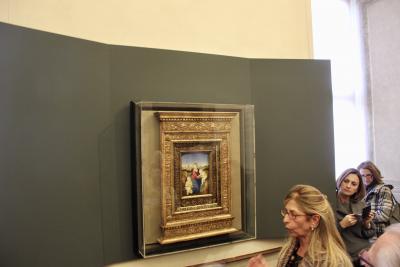Raphael's Madonna of Esterházy in rare Barberini show

ROME – The Gallerie Nazionali di Arte Antica di Roma in Palazzo Barberini plays host to one of the Raphael’s most important works, The Madonna of Esterházy, in a small show exploring a crucial moment in the artist’s career that provides a rare chance to see the picture in Italy.
The Esterházy itself is a tiny canvas of less than a foot-squared which passed through the hands of popes and royalty, before ending in the collection of the Hungarian noble family, the Esterházy, from which it takes its name.
It was stolen from the Hungarian National Museum of Fine Art in 1983, alongside a number of other works, but was later recovered by the Italian Carabinieri from an abandoned convent in Greece.
In a single room, the Esterházy, on loan from the Hungary, is displayed alongside a reproduction of the preparatory drawing, owned by the Uffizi Gallery, and copies of older Madonnas by Raphael from the Barberini’s own collection.
Cinzia Ammannato, the curator of the show, explained to the gathered press at the Palazzo that the Esterházy was “important not only for the history of Raphael himself, but in the history of art.” Thoughts echoed by the gallery’s director, Flaminia Gennari Santori, who called it “one of the most interesting works of the period” that marked “the arrival of Raphael in Rome.”
In 1508, Raphael was called by Pope Julius II to Rome, a moment considered by art historians to inaugurate some of the finest works of the High Renaissance such as the series of frescoes in the Vatican’s Stanza della Segnatura.
Having begun the Esterházy in Florence, Raphael quickly completed it in Rome. This may account for the fact that between the preparatory drawing and the final painting, Raphael added a series of Roman ruins to the otherwise typically Florentine trees and hills in the background.
But the exhibition is also an attempt to better utilise three of the gallery’s copies of Raphael Madonnas by later artists. They provide a useful contrast for the near-perfection of Raphael’s Esterházy, the harmony of the figures and the emotional poise that holds them together.
The show is open to the public until April 8, 2018.
tw


